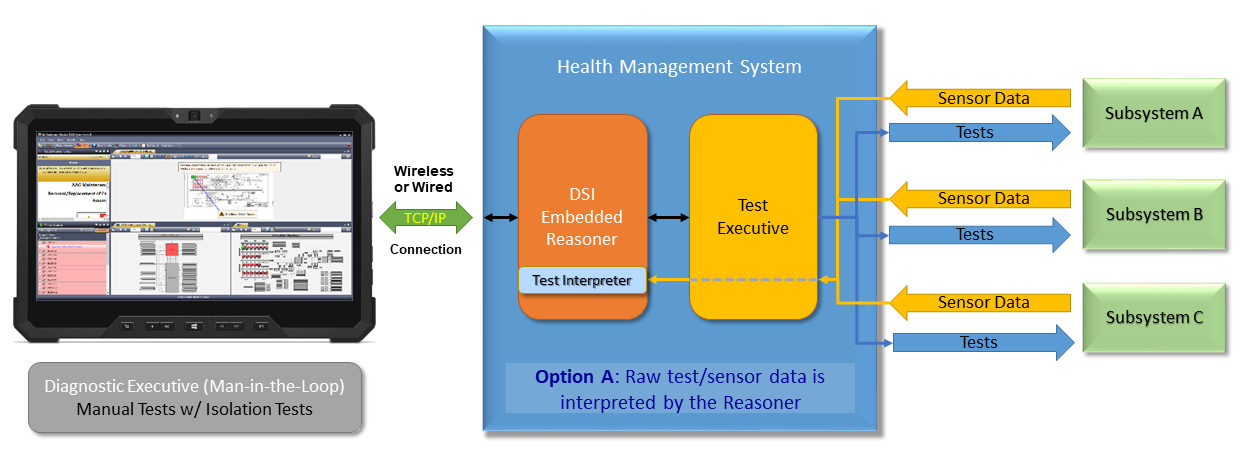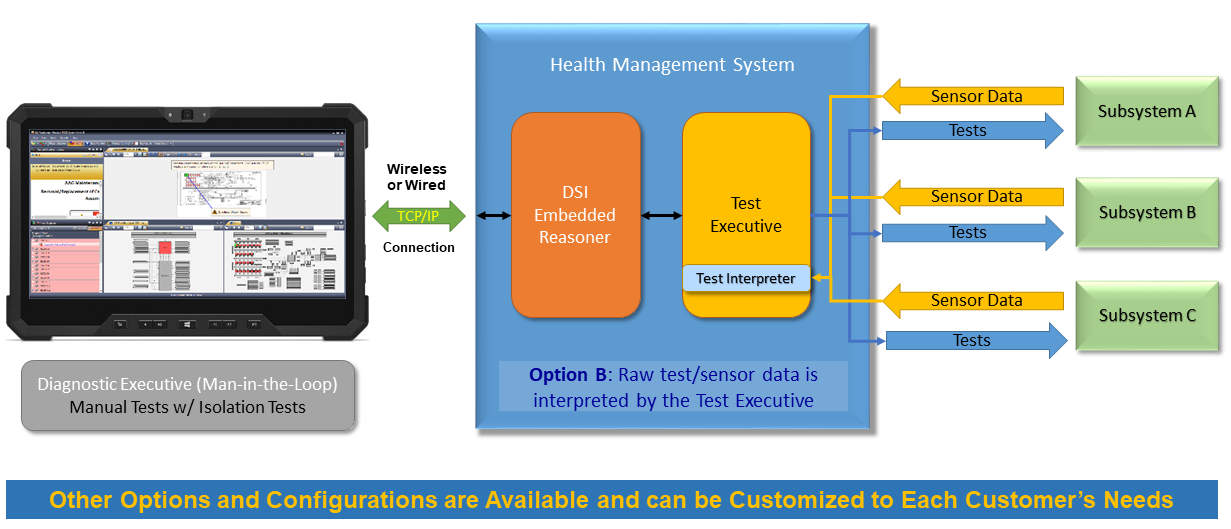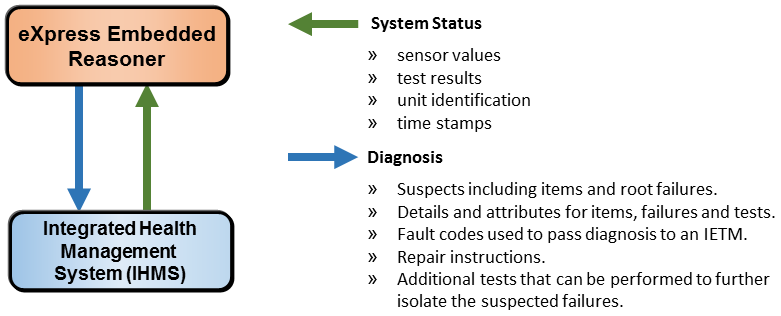

Products
eXpress Embedded Reasoner
The eXpress Embedded Reasoner allows system developers to embed eXpress static diagnostic sequences into system health management. The eXpress Embedded Reasoner runs as a background service operating in MS Windows or Linux systems. Messages are then passed between the reasoner and the health management software to send system status to the reasoner and receive a diagnosis of failure from the reasoner. Several options are available for implementation, two of which are shown below.


Embedded Development/Data Process Flow
Embedded diagnostics are developed by creating a functional dependency model and diagnostics in eXpress. The model is then exported to and converted by the Run-Time Authoring Tool into a compact embedded diagnostic design format, which is used by the embedded reasoner in the integrated health management system. The eXpress embedded reasoner communicates with the integrated health management system using message queues to receive system status from and send a diagnosis to the integrated health management system. The integrated health management system by querying the reasoner can then either provided a fault code to the user to assist in manual troubleshooting using an integrated electronic technical manual (IETM) or by providing direct repair instructions to the health management system user.

Figure 1 – eXpress Embedded Reasoner Development and Data Flow
Messaging Between the eXpress Embedded Reasoner and the Health Management System.
Data flow between the health management system software and the embedded reasoner involves passing the system status (e.g. sensor values or pass/fail values of system tests) to the embedded reasoner using a message queue. The health management system depending upon configuration then either directly queries the reasoner for a diagnosis of failures or waits for a response from the system status update. The diagnosis may include fault codes for isolated fault groups, lists of suspects, lists of root failures (i.e. the function or failure modes indicted by the diagnostics), repair instructions or additional tests that can be performed to further isolate the suspect failures.

Figure 2 – Messaging between the embedded reasoner and the IHMS.
Support for Multiple Simultaneous Diagnostic Reasoning
The eXpress Embedded Reasoner supports using multiple sub-system diagnostics within the same health management system. At the time of the diagnosis, the health management system may individually query each set of sub-system diagnostics developed for the system.


